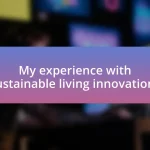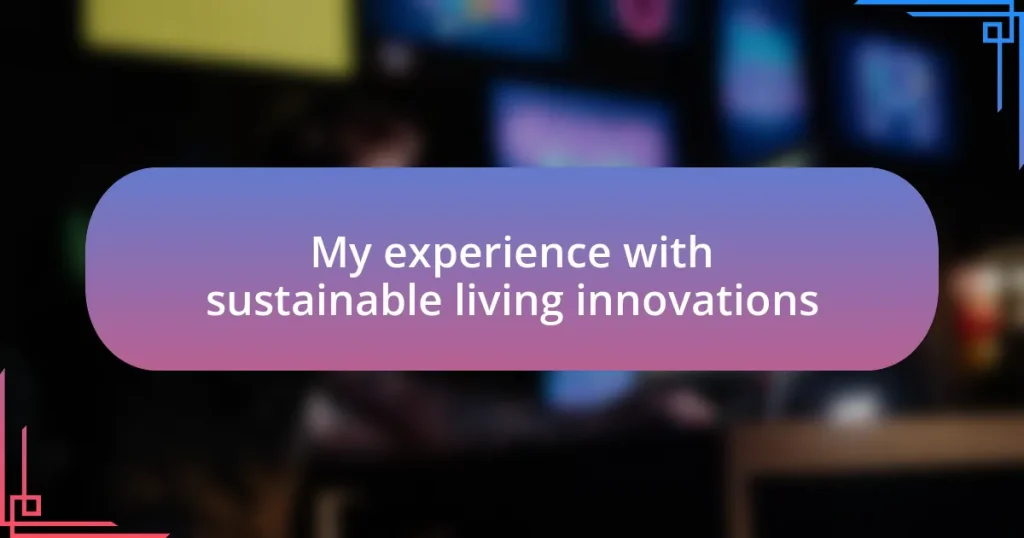Key takeaways:
- Smart home technology, such as energy-efficient appliances and smart thermostats, significantly reduces energy consumption and costs.
- Personal commitment to sustainable living is fostered through small changes, like using reusable bags and starting a vegetable garden.
- Challenges in adopting sustainable practices include financial concerns and accessibility of eco-friendly products, which can be overcome with perseverance.
- Future trends include urban vertical gardens and the shift towards circular economies, emphasizing the potential of waste as a resource.
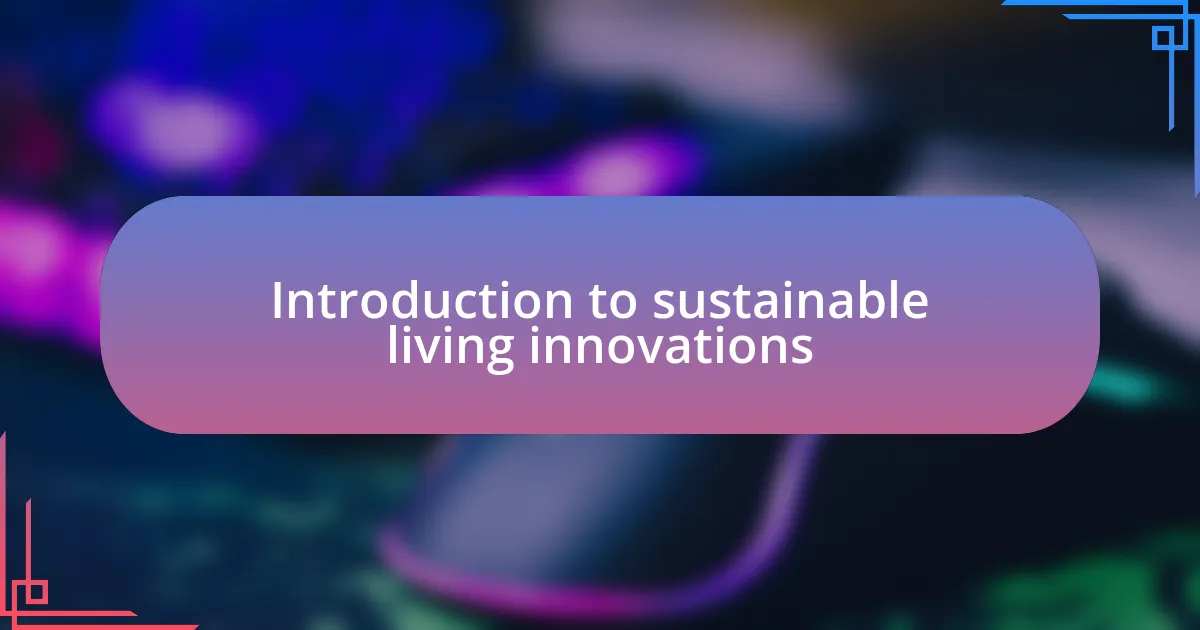
Introduction to sustainable living innovations
Sustainable living innovations are reshaping how we interact with our environments. When I first encountered the concept, I was taken aback by how small changes at home could create significant impacts on our planet. Have you ever considered how your daily routine can contribute to a more sustainable future?
One impactful innovation I stumbled upon was the use of smart home technology for energy management. I vividly remember installing a smart thermostat that adapted my heating patterns based on my habits. This simple change not only lowered my energy bills but also deepened my appreciation for the technology that allows us to live more sustainably.
As I embraced various sustainable practices, I became increasingly aware of the interconnectedness of our choices. From composting scraps to using biodegradable products, each decision feels like a step in the right direction. Don’t you think it’s incredible how these small innovations can lead to a more fulfilling and responsible lifestyle?
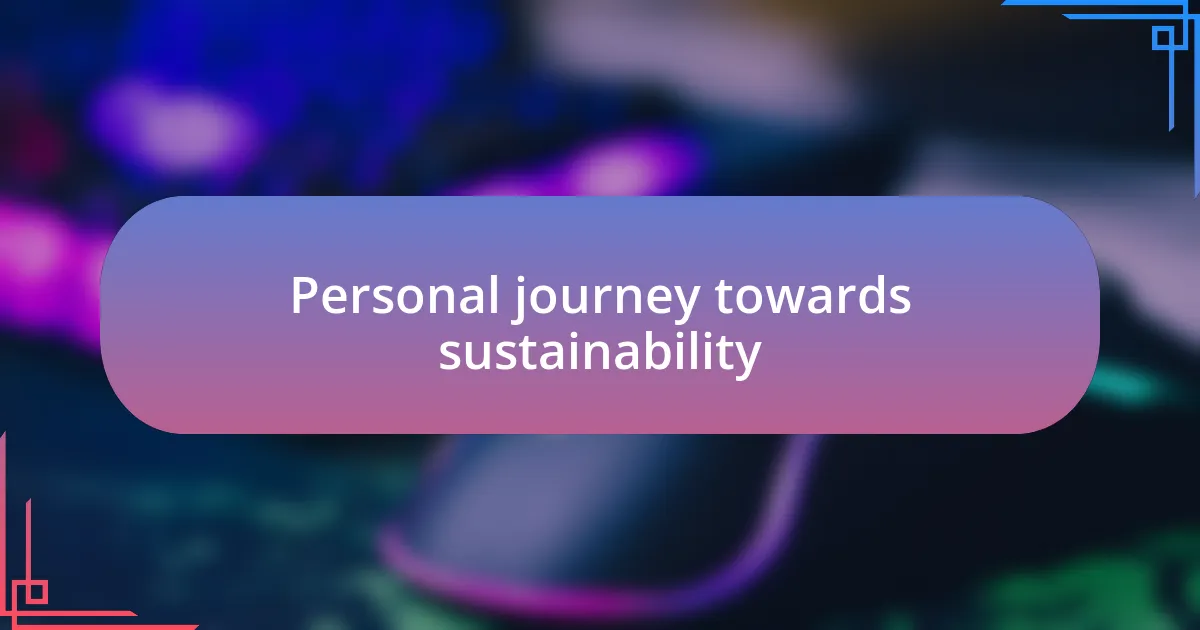
Personal journey towards sustainability
My journey towards sustainability began with a simple realization: my everyday choices mattered. I still remember the moment I switched to reusable shopping bags. It felt rewarding to reduce plastic waste, and I was surprised at the compliments from friends who noticed the change. That small act sparked a series of other adjustments in my life that led me deeper into sustainable living.
Reflecting on my journey, I’ve integrated several sustainable practices that shaped my lifestyle:
- Transitioning to LED light bulbs for better energy efficiency.
- Starting a vegetable garden, which not only provides fresh produce but also connects me to the cycle of nature.
- Adopting a plant-based diet, which has been both a challenge and a source of nourishment.
- Using public transportation more frequently, reducing my carbon footprint while contributing to community cohesion.
Each choice has become not just a habit but a commitment to a more thoughtful way of living. The process can be daunting, but each step represents my growth and determination to cultivate a sustainable future, both for myself and for the planet.
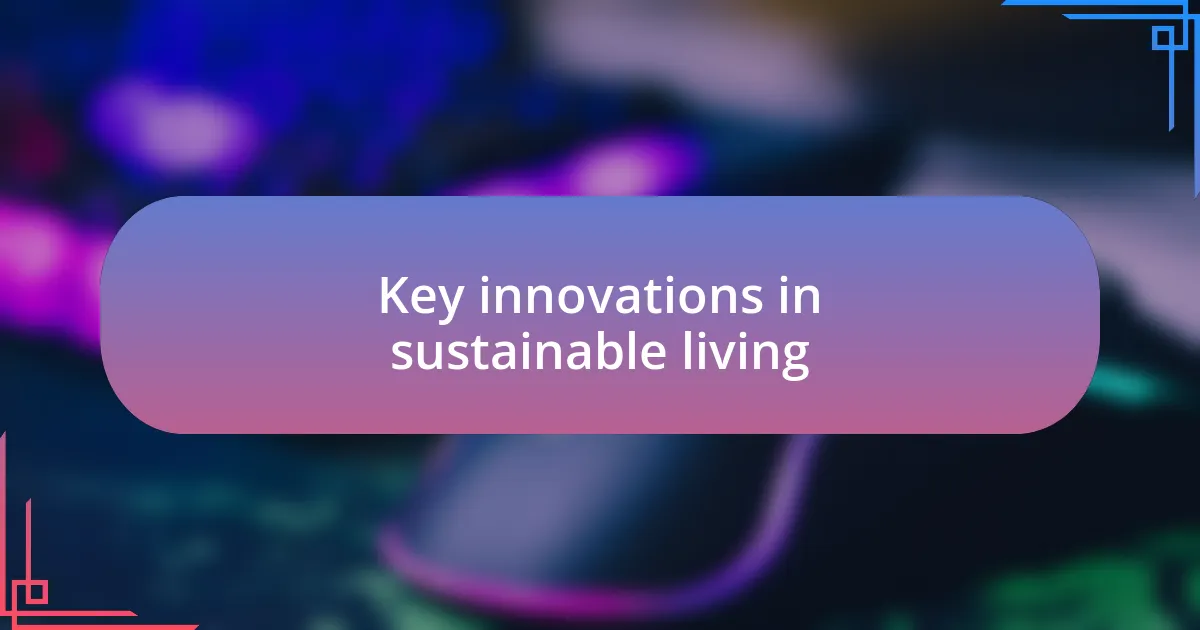
Key innovations in sustainable living
Key innovations in sustainable living have emerged as game-changers, reshaping how we think about our environmental impact. For instance, I was truly amazed when I first tried using energy-efficient appliances; the reduction in my electricity bill was a clear sign that these innovations are not just about saving the planet but also about saving money. It’s gratifying to see tangible results from what I believe is a responsible lifestyle choice.
Another remarkable innovation I’ve encountered is rainwater harvesting systems. I installed one in my home, and the thrill of using collected rainwater for my garden was unlike anything I’d experienced before. Not only does it conserve water, but it also helps me feel more in tune with the environment. This simple yet effective solution makes a significant difference, particularly in areas facing water scarcity.
Lastly, smart home technology has become a personal favorite. By integrating devices that optimize energy use based on my schedule, I’ve not only minimized waste but also maximized convenience. Monitoring my energy consumption in real time has led me to make smarter choices throughout my day, reinforcing my commitment to sustainable living.
| Innovation | Impact |
|---|---|
| Energy-efficient appliances | Lower energy bills and reduced carbon footprint |
| Rainwater harvesting | Conserves water and promotes environmental connection |
| Smart home technology | Optimizes energy use and encourages mindful consumption |
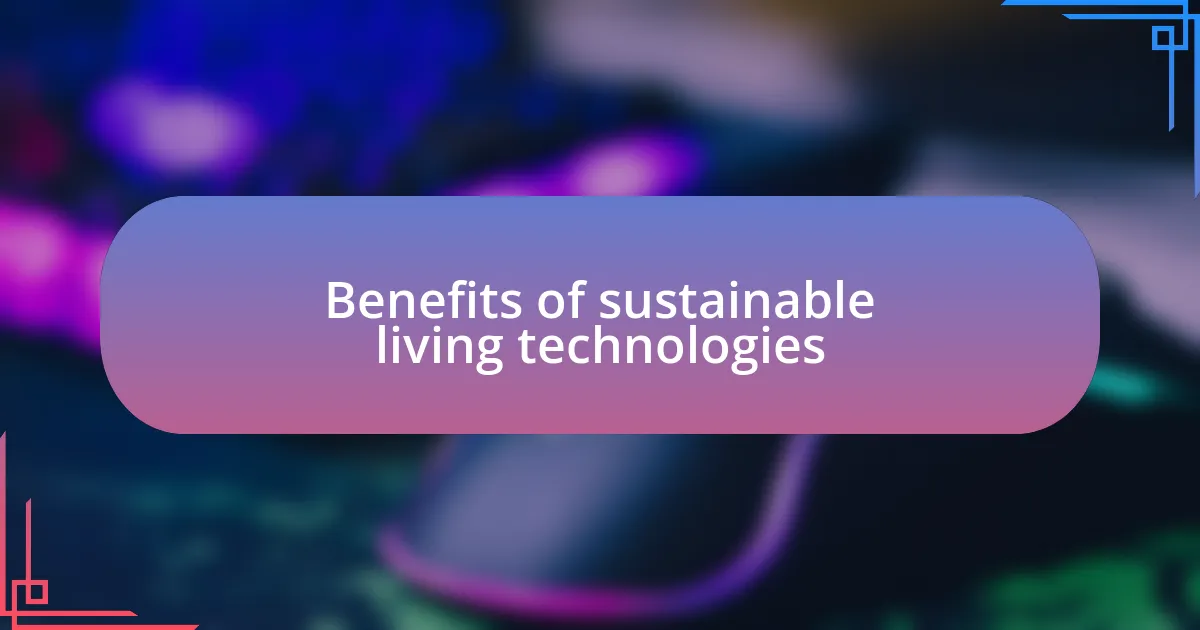
Benefits of sustainable living technologies
The benefits of sustainable living technologies go beyond just environmental responsibility; they weave into our everyday lives in ways that I never anticipated. For example, when I switched to LED lighting, the noticeable difference in ambiance created a cozy atmosphere in my home. It made me wonder how such a simple change could have such a profound impact, both in terms of energy savings and the quality of my living space.
I’ve also found that using solar panels has not only significantly reduced my electricity costs but has also granted me a sense of independence. I recall the day the first bill came in, showing a credit rather than a charge. It sparked a sense of pride in my decision to invest in clean energy, reinforcing my belief that sustainable technologies truly empower individuals to make a difference.
Moreover, the community aspect of adopting these technologies has been surprisingly enriching. Engaging with neighbors who share similar interests in sustainable practices has fostered friendships and a supportive network. Have you ever thought about how much more fulfilling it feels to connect with others over shared values? I’ve come to realize that sustainable living isn’t just a solo journey; it’s an enriching experience that builds connections and nurtures a sense of belonging.
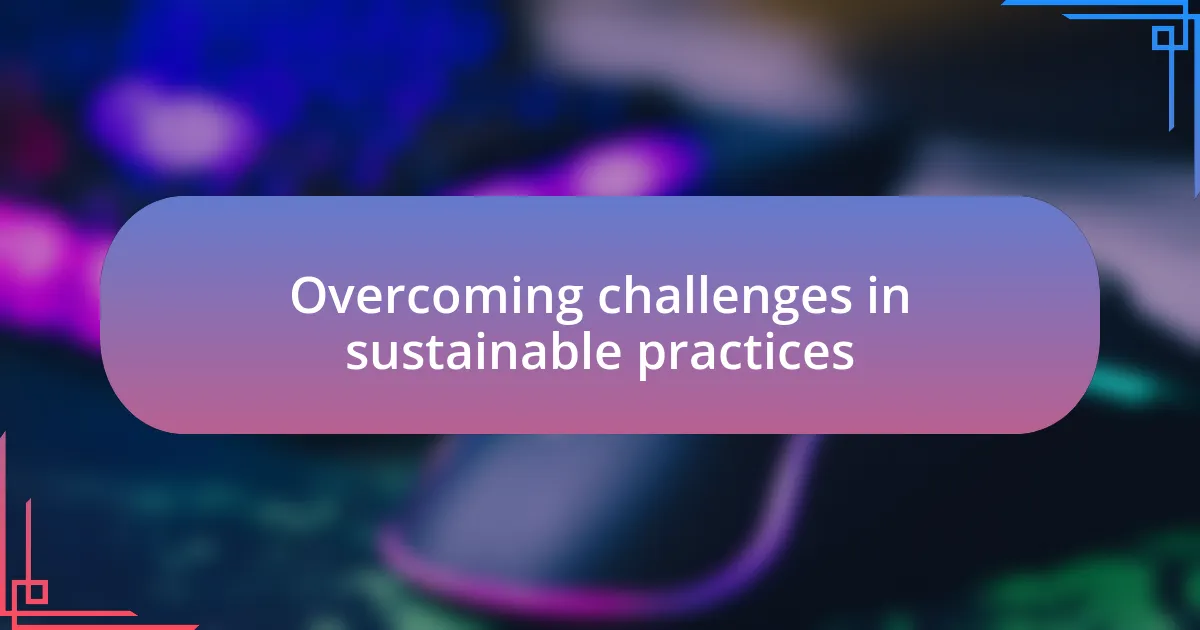
Overcoming challenges in sustainable practices
Transitioning to sustainable practices is not without its hurdles. I remember my own experience trying to implement a zero-waste lifestyle. At first, I felt overwhelmed by the sheer amount of choices and the fear of making mistakes. But as I started small—like using reusable bags and eliminating single-use plastics—I realized that every little step made a difference and helped alleviate my anxiety.
Financial concerns also play a role in adopting sustainable practices. When I first considered investing in energy-efficient appliances, I found myself hesitating due to the initial cost. However, when I crunched the numbers on long-term savings, it became clear that these appliances paid for themselves over time. Hasn’t it been heartening to see how investing in sustainability can lead to actual cost savings and not just idealistic benefits?
Another challenge many face is the accessibility of sustainable products. I’ve often found it challenging to locate eco-friendly items in my neighborhood. Yet, once I committed to seeking out local vendors and online resources, I discovered a wealth of options. This experience taught me perseverance is key—finding alternatives often leads to unexpected discoveries, enriching my journey towards sustainability in ways I hadn’t imagined.
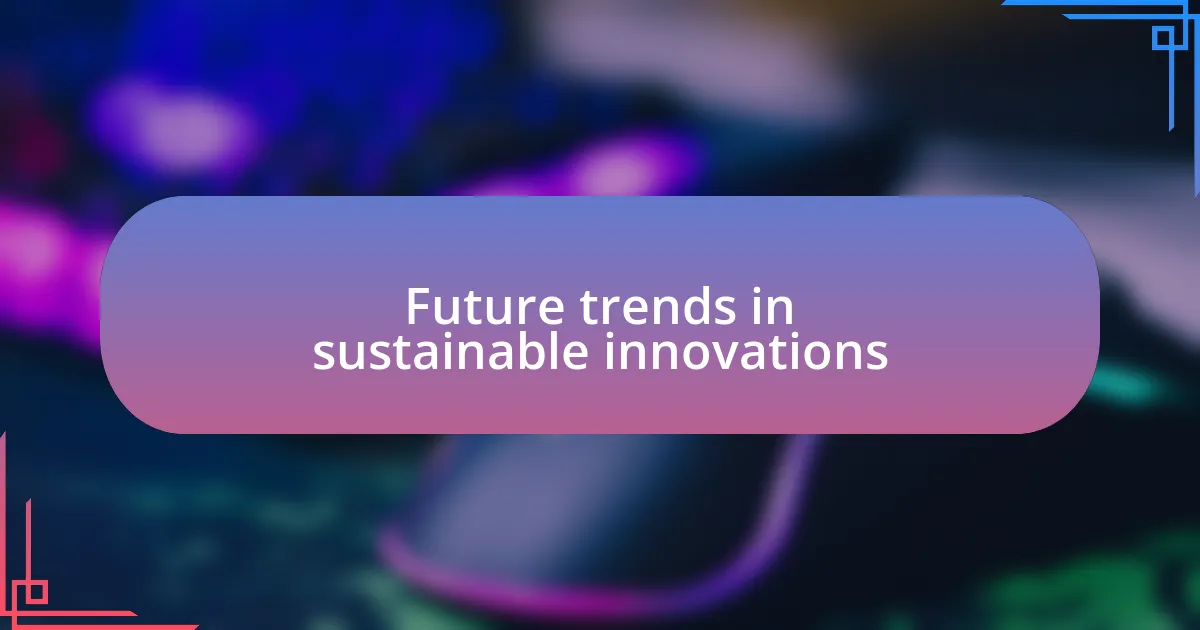
Future trends in sustainable innovations
As I look towards the future of sustainable innovations, I can’t help but feel a sense of excitement about the possibilities. One trend I see gaining momentum is the rise of urban vertical gardens. I remember visiting a city where they transformed an abandoned warehouse into a lush, green space that not only provided fresh produce but also improved air quality. How compelling is it that such initiatives could redefine urban living, creating oases of sustainability amidst concrete jungles?
Another fascinating trend I foresee is the integration of technology in sustainable practices, particularly through smart home innovations. I experimented with a smart thermostat in my own home, and it not only helped reduce my energy consumption but also educated me on my usage patterns. Isn’t it intriguing how technology can empower us to make more mindful choices while contributing to sustainability?
The shift towards circular economies is also something I’m eager to see develop further. Recently, I joined a community program focused on upcycling, and it truly opened my eyes to the potential of transforming waste into valuable resources. It raises an important question: what if we could reimagine waste not just as refuse but as a vital component of innovative solutions? There’s so much potential within this shift, and I believe it holds the key to a more sustainable future for all of us.








